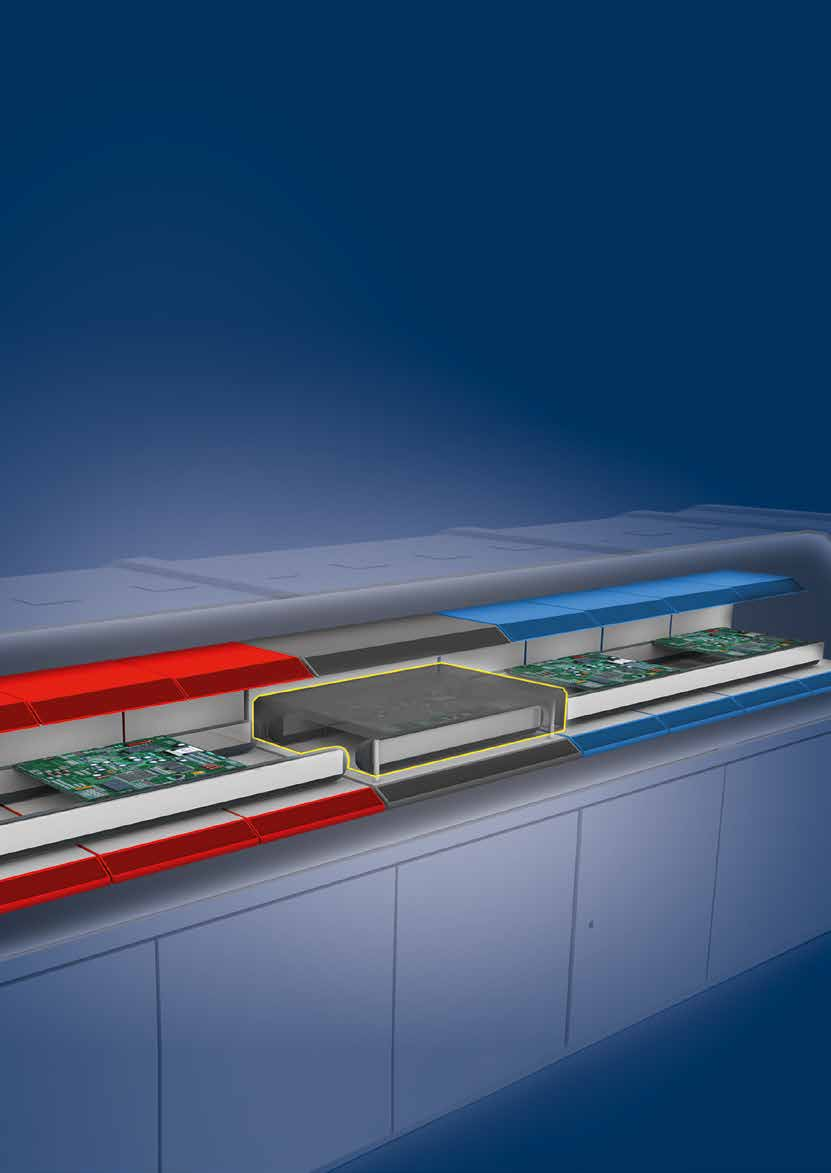The relationship between reflow soldering quality and temperature curve
Release time:2024-06-06Publisher:Jeenoce
When a circuit board passes through a reflow soldering device, the temperature curve of a point on the surface assembly device over time is called the temperature curve. When the PCB enters the preheating stage shown in the figure, the solvents and gases in the solder paste evaporate. At the same time, the flux in the solder paste wets the solder pads, component terminals, and pins. The solder paste softens, collapses, and covers the solder pads, isolating them from oxygen; Entering the insulation stage, the PCB and components will receive sufficient preheating to prevent sudden entry into the high-temperature welding zone and damage to the PCB and components; When the PCB enters the reflow stage, the temperature rapidly rises, causing the solder paste to reach a molten state. Liquid solder wets, diffuses, and mixes with the solder pads, component terminals, and pins of the PCB to form solder joints; The PCB enters the cooling stage and the solder joints solidify, at which point the reflow soldering is completed.

In the reflow process, the key is to adjust the temperature curve. Reasonably setting parameters such as temperature and rail transfer speed in each temperature zone, so that the temperature experienced by the welding object in the furnace during the transfer process changes according to the ideal curve pattern, is the key to ensuring the effectiveness and quality of reflow welding. The temperature curve testing is carried out through a temperature recording testing instrument, which generally consists of multiple thermocouples and recorders. Several thermocouples are fixed at the pins of large and small devices, the lower part of the BGA chip, the edge of the circuit board, etc., connected to the recorder, and together with the circuit board, they enter the furnace to record time temperature parameters. After being taken out at the outlet of the furnace, the parameters are fed into the computer and a curve is drawn using specialized software for analysis.
The temperature curve is the key to ensuring the quality of reflow soldering and lead-free reflow soldering. The actual temperature curve and the solder paste temperature curve should have similar heating slopes and peak temperatures. The heating rate before 160 ℃ should be controlled between 1 ℃/s and 2 ℃/s. If the heating slope rate is too fast, on the one hand, it will heat the components and PCB too quickly, which can easily damage the components and cause PCB deformation. On the other hand, the solvent in solder paste evaporates too quickly, which can easily splash out metal components and produce solder balls. The peak temperature is generally set at around 20 ℃ to 40 ℃ higher than the melting temperature of the solder paste (for example, the melting point of Sn63/Pb37 solder paste is 183 ℃, and the peak temperature should be set at around 205 ℃ to 230 ℃), with a reflow time of 10 seconds to 60 seconds. If the peak temperature is low or the reflow time is short, it will cause incomplete welding, and in severe cases, it will cause the solder paste to not melt; Excessive peak temperature or long reflux time can cause metal powder oxidation, affect welding quality, and even damage components and PCBs.

